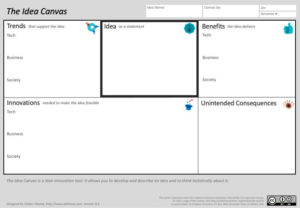A go-to-market (GTM) strategy is a plan that details how an organization can engage with customers to convince them to buy their product or service and to gain a competitive advantage. A GTM strategy includes tactics related to pricing, sales and channels, the buying journey, new product or service launches, product rebranding or product introduction to a new market.
– Gartner
In the Product Management Canvas, I have a whole section on GTM. It is a very important part of Product Management. So here is a guide on developing a GTM for your product. This guide aims to help a Product Manager provide holistic clarity on various aspects of a GTM strategy. While the execution will involve multiple departments in an organisation, the clarity and base collateral come from the Product Manager.
The Baker’s Dozen of Go-To-Market (GTM) Strategy
| Aspect | What | Why | Suggested Collateral | |
|---|---|---|---|---|
| 1. | Clarity on Purpose | The “Why” of the product so all are clear about it and can communicate the same | Different departments work have their own processes and partners. In order to avoid distortion of the purpose, it is important to have a singular understanding of the purpose | Idea Canvas and/or Product Management Canvas |
| 2. | Clarity on Audience | The customer segment | The positioning, pricing and message differ from one segment to another. Thus it is important to have clarity on the customer segment and its characteristics | Product Management Canvas |
| 3. | Clarity on Outcome | The success and failure metrics | How is the ideal outcome measured and at what point do you call for a pivot/closure | Measure of Success, Zone of Struggle and Measure of Failure |
| 4. | Clarity on Pricing | For the release, for the customer segment and to achieve the outcome the pricing is a key lever | Price is a very sensitive attribute of the product and all departments should be aware of the pricing policy | Pricing Tables |
| 5. | Clarity on Purchase Process | Which all ways can a customer purchase the product | To ensure the channels are up and experience near-zero downtime. The purchasing process should be as frictionless as possible | Process Flow Diagrams |
| 6. | Clarity on Content & Messages | Right from an Elevator Pitch, to the website to the marketing campaign landing page, the content and the message they convey should be clear, purpose-driven and uniform | To ensure that customers are targeted with a simple message on how the product will solve their problems | Elevator Pitch |
| 7. | Clarity on Schedule | The release date, schedule of launch-related marketing campaigns, introductory offers and other such key dates | This allows development teams to release on time, plan for surges in traffic and all departments to be aware of key dates to plan around | A Calendar of Events |
| 8. | Clarity on Team Actions | Along with the schedule, key tasks for each department | A well-orchestrated go-to-market needs a well-coordinated launch team | Action Plan |
| 9. | Clarity on Possible Issues | FAQ, list of known issues, hacks / overrides and key contacts | So that the Support team has answers to expected questions and knows who to contact for unexpected questions | FAQs & Support Training Plans |
| 10. | Clarity on Marketing Channels | What campaigns on what channels are bring planned | So the team is aware of campaigns, especially digital ones so that the leads and traffic are effectively captured | Marketing Calendars |
| 11. | Clarity on Social Channels | What social media channels are being used for active interactions | Social Media channels where the intended audience participates and thus all teams members can actively participate in commenting and resharing | Suggested Posts and Media |
| 12. | Clarity on “Others” | List of competitors and positioning of product viz-a-viz their strengths and weakness | So the team is aware of the competition and how to position the strengths of the product against the competitions’ | Competition Analysis and Objection Handling FAQ |
| 13. | Clarity on Product Central | The single place to go for all information about the product | So the team does not have to search for information when needed | Google Drive or an Internal Webpage |
Conclusion
GTM is an important event and the entire organization being fully prepared is important. This preparation starts with the Product Manager preparing the groundwork that all departments can build upon, based on their focus areas.


